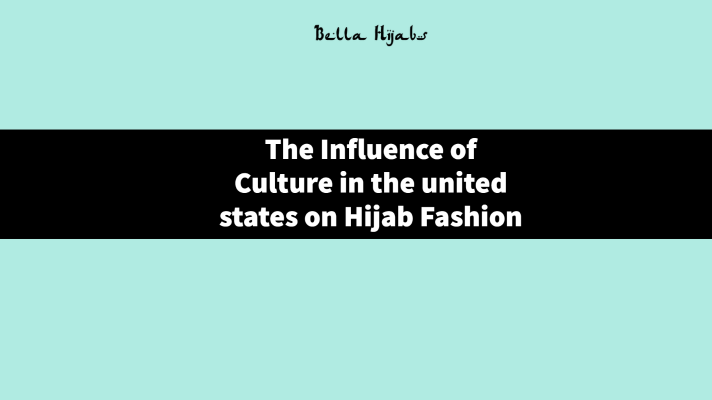
Hijab fashion has come a long way in the United States. Over the years, the way in which Muslim women dress has evolved to become more inclusive, stylish, and modern. One of the main influences on hijab fashion in the United States has been the blending of different cultures and styles.
Muslim women who wear the hijab often face the challenge of finding clothing that is both modest and fashionable. In the past, hijab fashion was often limited to traditional Middle Eastern styles, such as the abaya or the shalwar kameez. However, in recent years, there has been a surge in the popularity of modern hijab fashion that is heavily influenced by Western styles.
The blending of cultures has allowed Muslim women to experiment with their fashion choices, while still adhering to their religious beliefs. For example, many Muslim women now wear hijabs with denim jackets, sneakers, and other Western clothing items. This blending of cultures has created a unique style that is both modest and fashion-forward.
Social media has also played a significant role in the evolution of hijab fashion in the United States. Muslim influencers and bloggers have gained a large following on platforms such as Instagram, showcasing their unique styles and fashion choices. This has allowed for greater representation of Muslim women in the fashion industry, and has helped to break down stereotypes about what it means to be a Muslim woman.
In addition, the increased availability of modest clothing has made it easier for Muslim women to find clothing that is both modest and fashionable. Many mainstream retailers now carry clothing items that cater to Muslim women, such as long skirts, maxi dresses, and tunics.
However, it is important to note that the influence of culture on hijab fashion is not limited to Western styles. Muslim women from all over the world bring their own cultural influences to hijab fashion. For example, hijabs worn by Muslim women from South Asia may feature intricate embroidery and beading, while those worn by Muslim women from North Africa may be more brightly colored and feature bold prints.
The influence of culture on hijab fashion in the United States has created a unique style that is both modest and fashion-forward. Muslim women are now able to experiment with different styles and fashion choices while still adhering to their religious beliefs. The blending of cultures has created a diverse and inclusive community that celebrates the beauty of diversity.
Here are some sources that can be used to support the points made in the article:
-
"The Rise of Modest Fashion" by Elizabeth Paton, The New York Times: https://www.nytimes.com/2019/08/16/fashion/modest-fashion-hijab.html
-
"The Evolution of Hijab Fashion" by Hafsa Lodi, Arab News: https://www.arabnews.com/node/1769256/fashion
-
"5 Muslim Women Changing the Game in Fashion and Beauty" by Nadine Jolie Courtney, Vogue Arabia: https://en.vogue.me/fashion/5-muslim-women-changing-the-game-in-fashion-and-beauty/
-
"The Emergence of the Modest Fashion Industry" by Aditi Kumar, Forbes: https://www.forbes.com/sites/aditikumar/2020/02/10/the-emergence-of-the-modest-fashion-industry/?sh=2c764dcd1b71
-
"Hijabi Influencers Are Making Modest Fashion More Mainstream" by Aisha Hassan, BuzzFeed News: https://www.buzzfeednews.com/article/aishahassan/hijabi-influencers-are-making-modest-fashion-more-mainstream
-
"The Intersection of Modesty and Fashion: A Look at Muslim Women in America" by Jennifer Ibrahim, HuffPost: https://www.huffpost.com/entry/the-intersection-of-modes_b_8385402
These sources provide insights into the influence of culture on hijab fashion, including the rise of modest fashion, the evolution of hijab fashion, the role of Muslim influencers in the industry, and the emergence of the modest fashion industry as a whole.
